-
 Bitcoin
Bitcoin $76,444.7530
-3.77% -
 Ethereum
Ethereum $1,473.8355
-5.46% -
 Tether USDt
Tether USDt $0.9991
-0.08% -
 XRP
XRP $1.7965
-5.51% -
 BNB
BNB $553.4919
-0.36% -
 USDC
USDC $0.9999
-0.02% -
 Solana
Solana $105.2981
-1.74% -
 TRON
TRON $0.2303
0.81% -
 Dogecoin
Dogecoin $0.1422
-4.62% -
 Cardano
Cardano $0.5587
-4.41% -
 UNUS SED LEO
UNUS SED LEO $8.9866
1.01% -
 Toncoin
Toncoin $2.9933
-4.74% -
 Chainlink
Chainlink $10.9113
-4.81% -
 Stellar
Stellar $0.2215
-4.76% -
 Avalanche
Avalanche $16.1163
-3.29% -
 Sui
Sui $1.9371
-3.89% -
 Shiba Inu
Shiba Inu $0.0...01065
-6.69% -
 Hedera
Hedera $0.1469
-3.29% -
 MANTRA
MANTRA $6.2058
-1.53% -
 Dai
Dai $1.0000
0.01% -
 Bitcoin Cash
Bitcoin Cash $269.3457
-2.08% -
 Polkadot
Polkadot $3.3773
-5.87% -
 Litecoin
Litecoin $69.2204
-2.50% -
 Ethena USDe
Ethena USDe $0.9986
-0.01% -
 Bitget Token
Bitget Token $4.0180
-3.25% -
 Pi
Pi $0.5649
-4.50% -
 Hyperliquid
Hyperliquid $11.1928
-2.80% -
 Monero
Monero $195.3885
-4.41% -
 OKB
OKB $50.9235
-0.59% -
 Uniswap
Uniswap $4.7688
-6.95%
What is a DAO? How does it enable community-driven decentralized governance?
DAOs use blockchain and smart contracts to enable decentralized governance, allowing token holders to vote on proposals and manage funds transparently.
Apr 05, 2025 at 01:14 pm
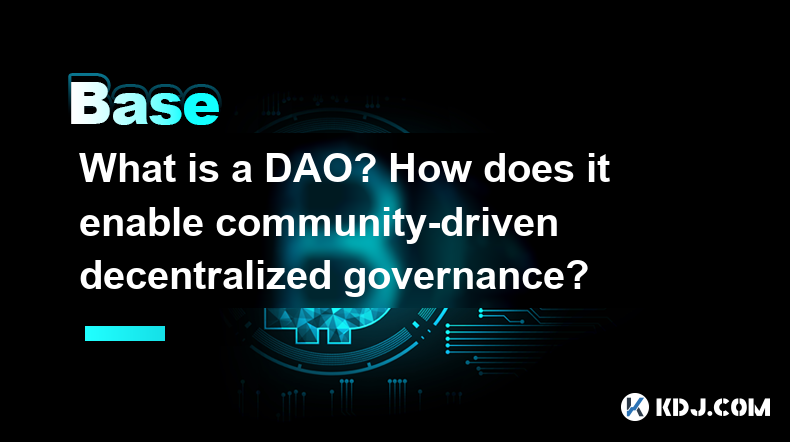
A Decentralized Autonomous Organization (DAO) is a revolutionary concept in the world of blockchain and cryptocurrency that aims to democratize decision-making and governance. DAOs operate on blockchain technology, which allows them to function without a central authority, making them inherently decentralized. This structure enables community members to participate directly in the governance of the organization, ensuring that decisions are made collectively and transparently.
The core idea behind a DAO is to create a system where the rules and operations are encoded in smart contracts on a blockchain. Smart contracts are self-executing contracts with the terms of the agreement directly written into code. These contracts automatically enforce the rules and execute the agreed-upon actions when certain conditions are met, eliminating the need for intermediaries. This automation and transparency are what make DAOs particularly appealing for community-driven governance.
To understand how DAOs enable community-driven decentralized governance, it's essential to delve into their structure and operational mechanisms. A DAO is typically governed by its token holders, who have voting rights proportional to their token holdings. These tokens can be bought, sold, or earned, and they represent a stake in the organization. When a proposal is put forward, token holders can vote on it, and if the proposal reaches a predetermined threshold of approval, it is implemented automatically by the smart contracts.
The process of creating and managing a DAO involves several key steps. First, the community must define the purpose and rules of the DAO. This includes deciding what the DAO aims to achieve, how decisions will be made, and what the governance structure will look like. Once these foundational elements are established, the next step is to develop and deploy the smart contracts that will govern the DAO. This requires technical expertise in blockchain development and smart contract programming.
After the smart contracts are deployed, the DAO can begin to operate. Members of the community can propose new initiatives, vote on proposals, and participate in the governance of the organization. The transparency of the blockchain ensures that all actions and decisions are recorded and verifiable, fostering trust among participants. Additionally, DAOs often have a treasury, which is a pool of funds managed by the smart contracts. These funds can be used to finance projects, pay contributors, or invest in other assets, all according to the rules set by the community.
One of the most significant advantages of DAOs is their ability to facilitate global participation. Since DAOs operate on the internet and blockchain, anyone with an internet connection and the necessary tokens can participate, regardless of their geographic location. This inclusivity can lead to a more diverse and robust decision-making process, as it brings together individuals from various backgrounds and perspectives.
To illustrate how DAOs work in practice, consider the example of The DAO, one of the earliest and most well-known DAOs. Launched in 2016 on the Ethereum blockchain, The DAO aimed to be a decentralized venture capital fund. Investors could buy DAO tokens, which gave them voting rights on how the fund's money should be invested. Proposals for investments were submitted by members, and if a proposal received enough votes, the funds were automatically disbursed according to the smart contract's rules. Although The DAO faced significant challenges, including a high-profile hack, it demonstrated the potential of DAOs to enable community-driven governance.
Key Components of a DAO
Understanding the key components of a DAO is crucial to appreciating how they enable decentralized governance. The first component is the smart contract, which forms the backbone of the DAO. These contracts define the rules, manage the treasury, and execute decisions based on community votes. The second component is the governance token, which gives holders the right to vote on proposals. The distribution and management of these tokens are critical to ensuring fair and effective governance.
The third component is the proposal and voting system. This system allows members to submit proposals for changes or new initiatives and vote on them. The voting mechanism can vary, but it typically involves a simple majority or a more complex system based on token weights. The fourth component is the treasury, which holds the DAO's funds and is managed according to the smart contract's rules. The treasury is essential for funding projects and operations, and its management is a key aspect of the DAO's governance.
Challenges and Considerations
While DAOs offer many benefits, they also face several challenges and considerations. One major challenge is security. Since DAOs rely on smart contracts, any vulnerabilities in the code can be exploited, leading to significant financial losses. The DAO hack in 2016 is a prime example of this risk. To mitigate this, DAOs must invest in rigorous security audits and ongoing monitoring of their smart contracts.
Another challenge is voter apathy. In many DAOs, a small percentage of token holders participate in voting, which can lead to decisions being made by a minority. To address this, DAOs can implement incentives for participation, such as rewards for voting or mechanisms to encourage broader engagement.
Legal and regulatory considerations are also significant. Since DAOs operate in a decentralized manner, they can fall into a gray area in terms of legal jurisdiction and compliance. Navigating these issues requires careful planning and, in some cases, collaboration with legal experts to ensure that the DAO operates within the bounds of the law.
Real-World Applications of DAOs
DAOs have been applied in various real-world scenarios, demonstrating their versatility and potential. One notable example is MakerDAO, which manages the DAI stablecoin. MakerDAO's governance involves token holders voting on critical parameters such as stability fees and collateral types. This decentralized approach ensures that the stablecoin's operations are aligned with the community's interests.
Another example is Aragon, a platform that enables the creation and management of DAOs. Aragon provides tools for setting up governance structures, managing tokens, and facilitating voting. This platform has been used to create DAOs for various purposes, from managing decentralized applications to funding community projects.
Decentraland is another interesting application of DAOs. In Decentraland, a virtual world built on the Ethereum blockchain, land and assets are managed through a DAO. Token holders can vote on proposals related to the platform's development and governance, ensuring that the community has a say in its evolution.
How to Participate in a DAO
Participating in a DAO involves several steps, depending on the specific DAO and its governance structure. The first step is to acquire the governance tokens of the DAO. These tokens can often be purchased on cryptocurrency exchanges or earned through contributions to the DAO's ecosystem.
Once you have the tokens, you can participate in the governance process. This typically involves submitting proposals or voting on existing ones. To submit a proposal, you will need to follow the DAO's specific guidelines, which may include providing detailed information about the proposal and its potential impact.
Voting on proposals is usually done through a dedicated platform or interface provided by the DAO. You will need to connect your cryptocurrency wallet to the platform and use your tokens to cast your vote. The voting process can vary, but it often involves selecting a proposal and indicating your support or opposition.
Engaging with the community is also an essential part of participating in a DAO. Joining forums, attending virtual meetings, and contributing to discussions can help you stay informed and influence the DAO's direction. Active participation can also lead to opportunities to earn more tokens or take on leadership roles within the DAO.
Frequently Asked Questions
Q: Can anyone create a DAO, and what are the prerequisites?
A: Yes, anyone with the necessary technical skills and resources can create a DAO. The prerequisites include a clear understanding of the DAO's purpose, the ability to develop and deploy smart contracts, and a plan for distributing governance tokens. Additionally, having a community interested in participating in the DAO's governance is crucial for its success.
Q: How do DAOs handle disputes and conflicts within the community?
A: DAOs typically handle disputes and conflicts through their governance mechanisms. Proposals can be submitted to address specific issues, and the community can vote on resolutions. Some DAOs also have dispute resolution mechanisms built into their smart contracts, which can automatically enforce decisions based on predefined rules.
Q: What are the potential risks of investing in a DAO?
A: Investing in a DAO comes with several risks, including smart contract vulnerabilities, regulatory uncertainty, and the potential for low voter turnout affecting governance decisions. Additionally, the value of governance tokens can be volatile, and there is always the risk of the DAO failing to achieve its objectives.
Q: How can DAOs ensure fair and inclusive governance?
A: To ensure fair and inclusive governance, DAOs can implement several strategies. These include using quadratic voting to give more weight to smaller token holders, providing incentives for participation, and fostering an active and engaged community. Additionally, transparent communication and regular updates can help maintain trust and inclusivity within the DAO.
Disclaimer:info@kdj.com
The information provided is not trading advice. kdj.com does not assume any responsibility for any investments made based on the information provided in this article. Cryptocurrencies are highly volatile and it is highly recommended that you invest with caution after thorough research!
If you believe that the content used on this website infringes your copyright, please contact us immediately (info@kdj.com) and we will delete it promptly.
- "Cardano (ADA) Price Could Dip Below $0.60, Following Previous Market Cycle"
- 2025-04-09 05:10:12
- BONK, the well-known meme coin, has risen over 35% in the last week, attracting meme coin investors in the market. So, what caused this rally?
- 2025-04-09 05:10:12
- Bitcoin (BTC) Investors May Not Exactly Feel It, but BTC Has Been a Relatively Good Bet
- 2025-04-09 05:05:12
- Donald's Bitcoin (DONBTC) Could Turn Early Investors into Multi-Millionaires, Like Shiba Inu (SHIB) and Dogecoin (DOGE) Did
- 2025-04-09 05:05:12
- 6 Upcoming Kraken Listings That Could Be the Next Big Thing in Crypto
- 2025-04-09 05:00:13
- COTI Unveils New Privacy-Focused Blockchain to Reshape Web3 Transactions
- 2025-04-09 05:00:13
Related knowledge
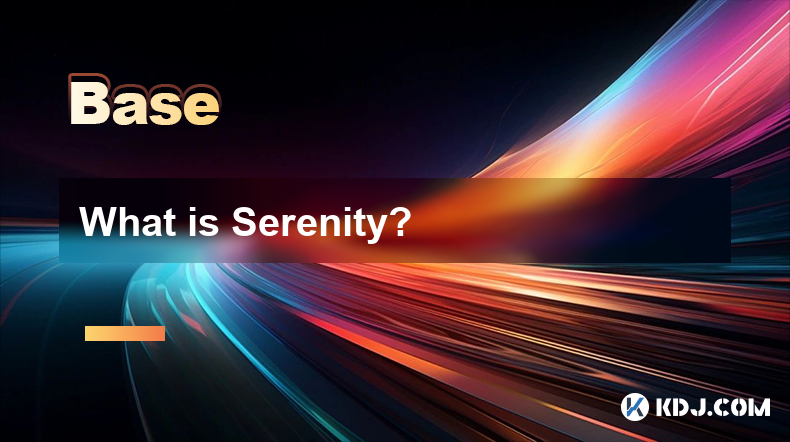
What is Serenity?
Apr 08,2025 at 02:00pm
Serenity, also known as Ethereum 2.0, represents a major upgrade to the Ethereum blockchain. This ambitious project aims to address the scalability, security, and sustainability issues faced by the current Ethereum network. Serenity is not a single update but a series of upgrades that will transform Ethereum into a more efficient and robust platform. Th...
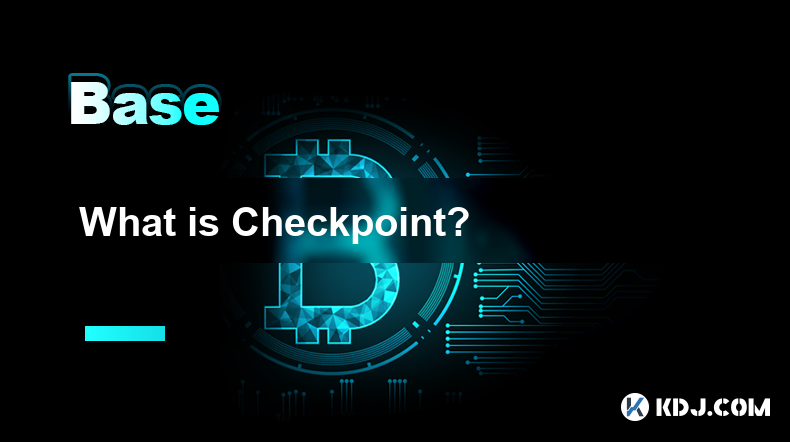
What is Checkpoint?
Apr 08,2025 at 05:08pm
A checkpoint in the context of blockchain and cryptocurrencies is a mechanism used to enhance the security and efficiency of a blockchain network. It serves as a snapshot of the blockchain at a specific point in time, which can be used to validate the integrity of the chain and prevent certain types of attacks. Checkpoints are particularly important in ...

What is Finality Gadget?
Apr 08,2025 at 04:14am
The Finality Gadget is a crucial component in the architecture of certain blockchain networks, particularly those that utilize a hybrid consensus mechanism. It plays a pivotal role in ensuring the finality of transactions, which means that once a transaction is confirmed, it cannot be altered or reversed. This article delves into the intricacies of the ...
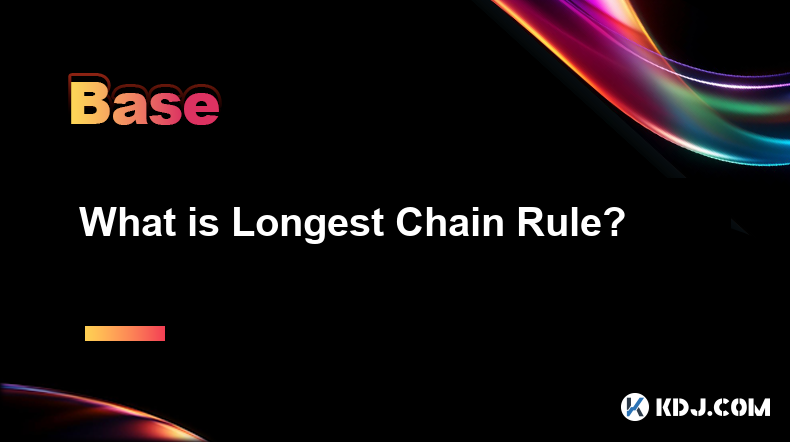
What is Longest Chain Rule?
Apr 08,2025 at 07:50am
The Longest Chain Rule is a fundamental concept in blockchain technology, particularly in the context of cryptocurrencies like Bitcoin. This rule is crucial for maintaining the integrity and security of the blockchain network. In essence, the Longest Chain Rule dictates that the valid blockchain is the one with the most cumulative proof-of-work, which i...
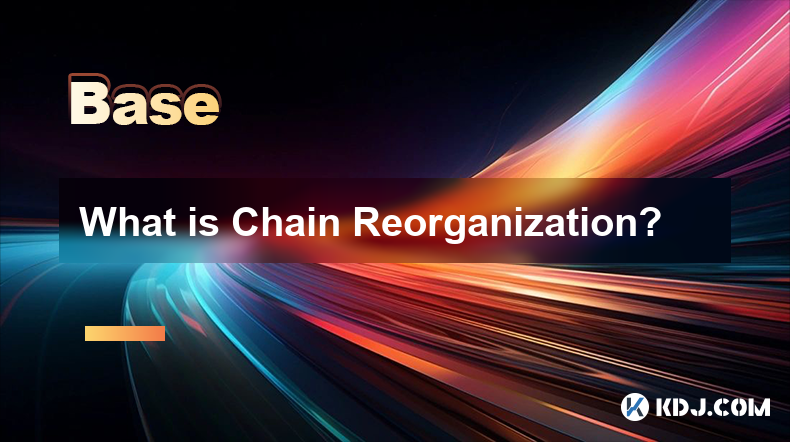
What is Chain Reorganization?
Apr 08,2025 at 03:08pm
What is Chain Reorganization? Chain reorganization, often referred to as a 'reorg,' is a fundamental concept in blockchain technology that can significantly impact the integrity and operation of a blockchain network. Chain reorganization occurs when a blockchain network replaces a previously accepted block or series of blocks with a new set of blocks, l...
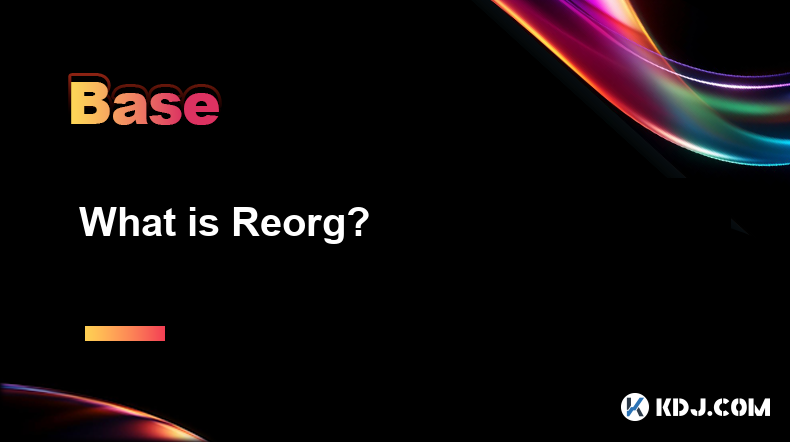
What is Reorg?
Apr 08,2025 at 11:08pm
What is Reorg?In the world of cryptocurrencies, particularly those that operate on blockchain technology, the term Reorg or Blockchain Reorganization is a critical concept that users and developers need to understand. A reorg refers to a situation where the blockchain undergoes a reorganization of its blocks, which can lead to changes in the accepted ve...

What is Serenity?
Apr 08,2025 at 02:00pm
Serenity, also known as Ethereum 2.0, represents a major upgrade to the Ethereum blockchain. This ambitious project aims to address the scalability, security, and sustainability issues faced by the current Ethereum network. Serenity is not a single update but a series of upgrades that will transform Ethereum into a more efficient and robust platform. Th...

What is Checkpoint?
Apr 08,2025 at 05:08pm
A checkpoint in the context of blockchain and cryptocurrencies is a mechanism used to enhance the security and efficiency of a blockchain network. It serves as a snapshot of the blockchain at a specific point in time, which can be used to validate the integrity of the chain and prevent certain types of attacks. Checkpoints are particularly important in ...

What is Finality Gadget?
Apr 08,2025 at 04:14am
The Finality Gadget is a crucial component in the architecture of certain blockchain networks, particularly those that utilize a hybrid consensus mechanism. It plays a pivotal role in ensuring the finality of transactions, which means that once a transaction is confirmed, it cannot be altered or reversed. This article delves into the intricacies of the ...

What is Longest Chain Rule?
Apr 08,2025 at 07:50am
The Longest Chain Rule is a fundamental concept in blockchain technology, particularly in the context of cryptocurrencies like Bitcoin. This rule is crucial for maintaining the integrity and security of the blockchain network. In essence, the Longest Chain Rule dictates that the valid blockchain is the one with the most cumulative proof-of-work, which i...

What is Chain Reorganization?
Apr 08,2025 at 03:08pm
What is Chain Reorganization? Chain reorganization, often referred to as a 'reorg,' is a fundamental concept in blockchain technology that can significantly impact the integrity and operation of a blockchain network. Chain reorganization occurs when a blockchain network replaces a previously accepted block or series of blocks with a new set of blocks, l...

What is Reorg?
Apr 08,2025 at 11:08pm
What is Reorg?In the world of cryptocurrencies, particularly those that operate on blockchain technology, the term Reorg or Blockchain Reorganization is a critical concept that users and developers need to understand. A reorg refers to a situation where the blockchain undergoes a reorganization of its blocks, which can lead to changes in the accepted ve...
See all articles






















































































